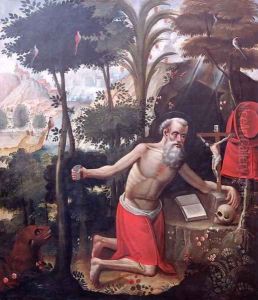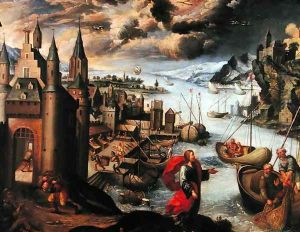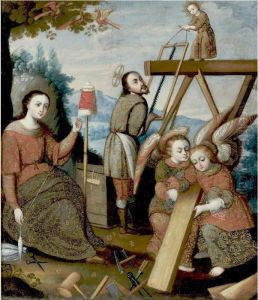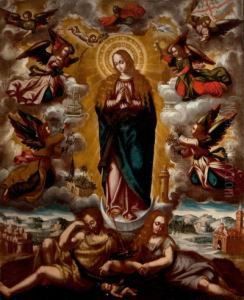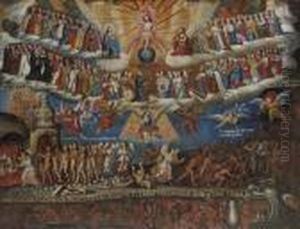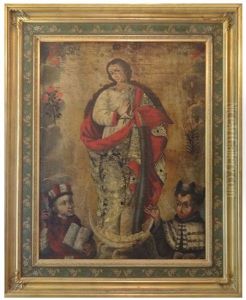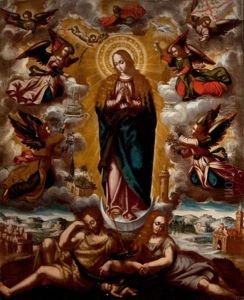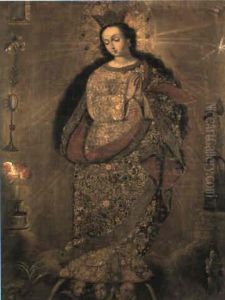Diego Quispe Tito Paintings
Diego Quispe Tito was a Peruvian painter, born in 1611 in the region of Cusco, which was then part of the Spanish Viceroyalty of Peru. He is known for being one of the most prominent representatives of the Cusco School of painting, which was a Roman Catholic artistic tradition that arose in Cusco during the Colonial period, combining elements of European Baroque religious painting with Andean culture and iconography.
Quispe Tito was of indigenous origin, and his work is characterized by its use of bright colors, gold leaf, and integration of native flora and fauna. This was a hallmark of the Cusco School, reflecting a hybridization of local and European artistic traditions. He received his artistic training from Italian and Spanish painters who were active in Cusco at the time, as well as from local masters, which was common in the artistic environment of colonial Cusco.
His religious paintings were in high demand, particularly for decorating churches and convents throughout the Andes. One of his most noted contributions was the incorporation of astronomical elements into his artwork, which can be seen in some of his paintings of the Virgin Mary, where stars and constellations are depicted with precise detail. This is believed to reflect an integration of pre-Columbian astronomical knowledge, particularly Incan, with Christian iconography.
Quispe Tito's work was not only significant for its aesthetic qualities but also for its role in the cultural preservation and transmission of Andean visual language post-conquest. His legacy includes a large number of religious paintings, many of which are still preserved in churches and museums in Peru and abroad.
Diego Quispe Tito passed away in 1681 in Cusco. His work has continued to be studied and admired for its artistic beauty and cultural significance, serving as an important example of cultural adaptation and resistance through art during the colonial period in the Americas.
